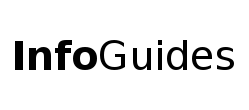
 | University Libraries
| University Libraries

The Open University started in the United Kingdom in 1969 as a public, distance education university. Later, the term "open content" was coined in 1998 by David Wiley and was inspired by the open software movement. The prevalence of open educational resources and the communities supporting them continue to grow.
Resources made freely available are not necessarily created for free. Most OER are written by academics and peer-reviewed. Furthermore, most who adopt OER are experts in their fields and are therefore optimally suited to judge a resource's quality.
What is the business model that sustains and maintains OER?
There is no single model. Many OER initiatives do not profit or receive a return of any kind, the thinking being that OER will become the normal educational content delivery method in the future where maintenance costs are built into the responsibilities of universities. If that seems unsustainable, consider the following -
Companies like Barnes and Noble and Pearson have created business models around OER including textbook publishers and educational technologies companies. Those OER avenues are subject to the same market flaw as traditional textbooks. While prices might be low now, there is no consumer choice mechanism to ensure they stay low.
OER authors retain full copyright of the resources they create. In order to be considered OER a resources must have an open license.
A license explicitly states what a copyright holder allows others to do with their work. All rights reserved is a form of a license that limits the use of a resource to that which is allowed by fair use and nothing else. The non-profit Creative Commons has written and openly published a spectrum of legal statements explicitly permit various uses of a resource. Other license exist, the GNU Free Documentation License, for example, applies similar permissions to a work.
Between the years 2006 and 2016 college textbook prices increased at a rate more than three times that of inflation outpacing college tuition and fees. This seemingly indicates that students are being taken advantage of when it comes to course materials.
Yes, but . . . Legal licenses do exist to prevent commercial uses of otherwise free materials. Most notable is CC BY-NC. However, the most open licenses –the least restrictive licenses– do not prevent commercial uses. Most often commercial uses of OER are justified by there having been value added to the OER. In theory, it is that added value that end users should pay for because the original OER is still available for free. "Added value" can be anything from supplemental chapters, updated illustrations, added quizzes, to wrapping the resource in an LMS where users pay for access to that LMS, etc.
Creative Commons Licenses are legal terms that supplement copyright – not an alternative to copyright. They work alongside copyright and enable the modification of its terms to fit specific needs. Applying a Creative Commons License to a work can be thought of as changing the familiar, default...
"All rights reserved"
to
"Some rights reserved."
You don't. To apply the terms of a CC license to a work, simply choose a license using this wizard and insert its icon and its declaration into your work where you would typically include "All Rights Reserved" or "©". You'll find an example declaration at the bottom of this page.
The best place is on the Creative Commons website where these licenses are fully explained in plain English.
All original content on this page is licensed under a Creative Commons Attribution 4.0 International License. All linked content maintains its respective license. This page is based on a similar guide from the University of Oklahoma Libraries with permission.


Ask a Librarian | Hours & Directions | Mason Libraries Home
Copyright © George Mason University